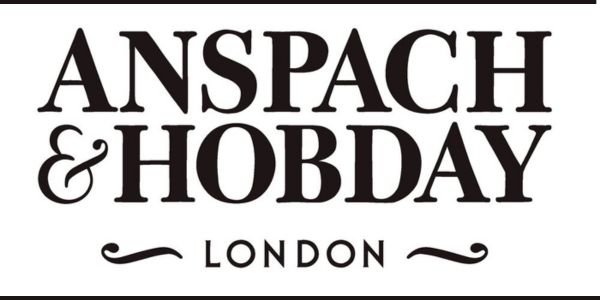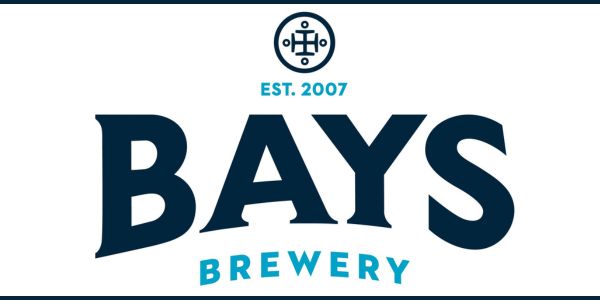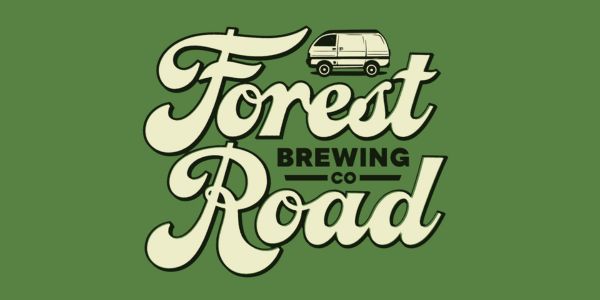In the face of an invasion of West Coast IPAs and New England pales, it can be easy to neglect our home-grown hops. But, hey, they’re dull in comparison, aren’t they, and good old for traditional brown bitters, supped in an old fashioned pub, labrador at your feet?

Peter Glendenning (left) and Paul Corbett talk hops, and specifically the development of Jester
Hop merchant Charles Faram begs to differ. In September each year the company hosts its hop walk, taking brewers and other industry people around the hop farmers it works with in Herefordshire and Worcestershire, inspecting the current crop of hops. And you know what? There are new varieties which are really packing a punch.
It’s been a strange year, alright, and little, on the face of it, more strange than going for a ‘virtual’ hop walk. Yet that’s just what we did this week, in the company of the excellent team at Charles Faram, and what an enjoyable and educational day it turned out to be.
In lockdown we have all become, to varying degrees, acquainted with Zoom. This time around we were introduced to a new (to me) piece of software, Floor, which did a good job of keeping live speakers and pre-recorded films going. There was a slight hiatus leading to an extended lunch break, but I’m not sure Floor was the flaw.
There was a lot to take in, but for me I found the most interesting segment a walk around Charles Faram’s local hop growers’ fields, in the company of managing director Paul Corbett, enthusiatic about his subject, and, rightly, overflowing with praise for the work of the farmers.
The Charles Faram development programme is a thing of wonder. We were introduced to Peter Glendenning, Charles Faram’s hop development programme leader, standing by a crop of Jester, the variety that kicked off the programme some ten years ago.
‘Jester had such a strong flavour compared to some of the flavours we were getting from British varieties’
Jester was developed from seedlings of crops already being grown, such as Sovereign and Target. One parent was Cascade, because Paul had said he wanted to draw out some Cascade aromas in the new variety. Paul had been told, however, that you can’t have American aromas in English hops because of the different growing conditions. But Peter had a go anyway.
The rest, as they say, is history. And here comes one of my favourite fun facts from the day. In 2012, Peter brought Paul a sample of one of the Cascade seedlings which, allegedly “were a waste of time”. Reminiscing with Paul, Peter said: “I stuck it under your nose while you were on the phone and you assumed I’d pinched some of your US Cascade out of your store, pretending it was one of mine. It was a bit of a joke on you, hence the name Jester.”
Paul said: “I must admit, when you first brought me that sample I couldn’t quite believe that it was a British sample because it had such a strong falvour compared to some of the flavours we were getting from the British varieties, with more traditional flavours, like Challenger, Fuggles, and Goldings. These were very different, and so when you put them in front of me it was very exciting to see and smell those aromas which were coming from a British plant.”
From there, the programme was extended. The seedlings were spread across several farms, and there was lots of harvesting and smelling, but the proof is in the brewing, so experimental brews ensured the varieties were developing well. Jester has gone on to yield Godiva and Harlequin varieties, each with a little more aplha bitterness, higher yields, and, crucially, more disease resistance. Harlequin is the new benchmark for flavour, said Peter.
There’s something like 5% aroma being added year on year, but how long this can go on for is unknown. Considering, however, that they never thought they’d end up with Jester, there could be pleasant surprises ahead, for growers and, ultimately, drinkers.

An example of a beer featuring the Jester hop
At Townend Farm, near Ledbury, experiemental variety CF247 is being grown, so new it has yet to acquire a name. Paul said: “CF247 has been selected for its big, bold cones, its beautifu appearance, very good yields, excellent resistance to pests and disease, and it picks very well on the picking machine … the aroma on these is stunning. When we pick and have a rub and a sniff of these we’re getting some really nice grapefruit, lemon flavours coming through, whish is great to see on a British variety.”
CF247 moves the programme on another stage from the Jesters, Harlequins, Godivas, and Olicanas. The hop will be seen in beers within the next 12 months, hopefully. There’s a lot of waste. Some plants grow very poorly up the bine, and Faram’s know they’re not going to be a potential new variety. “We lose a lot of plants thatare not up to scratch,” says Paul. “But that’s good, because finding the failures is a good way of finding the good ones, as well.”
In this first session of the hop walk day, we finally find ourselves finally at the Jester yard at Townend Farm, with grower Mark Andrews. It’s eight years since that first Jester was planted on his farm, and the development project has gone from strength to strength. It’s yielded well, with very few disease problems, and, surprisingly, has worked well in lagers. Paul said: “Every year we’re picking up a lot of the characteristics we want and losing a lot of the characteristics we don’t want.”
So more higher-alpha hops for the English brewing industry, supplied by local farms. That ticks the sustainability box, too. It’s too early for this new varieties to match the punch of the big bittering American hops, but the longer the project goes on, the more the flavours develop. I can’t wait to see where this programme goes.
• There’s more to say about the ‘Faram hop walk we didn’t walk’ — watch this space!
• Update: the video of Paul Corbett’s chats to Peter Glendenning, and Marks Andrews of Townend Farm, is now available on YouTube (click below)











